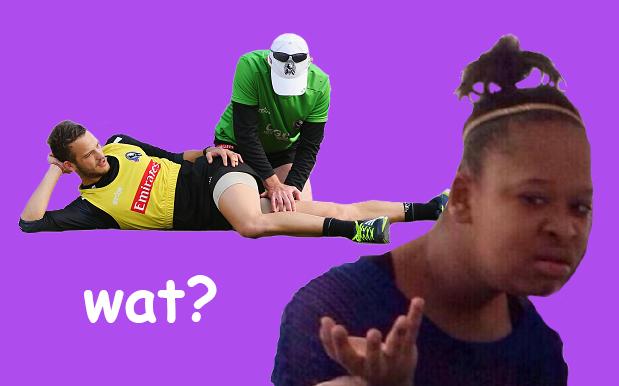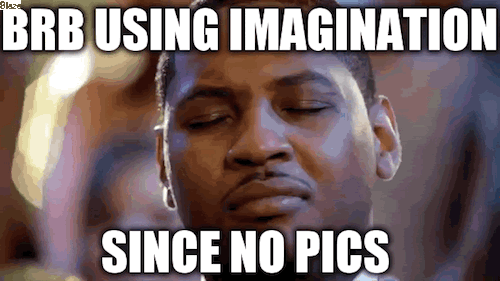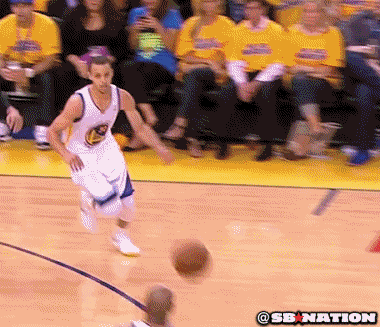
Let’s spring right into a hypothetical, shall we?

You’re at the gym, pumping deadlifts with a fair whack of weight. You’re feeling strong, feeling good. Until you suddenly stop feeling good because there is a serious pain in your lower back.
You immediately swallow some Panadol to nip the pain in the bud, but you know you’re gonna have to see a professional to check out what’s wrong.
Where do you go? Do you go get a massage at the spa down the road? Do you go to the doctor? Do you go and see a Physiotherapist, or a Chiropractor… or an Osteopath? What even is an Osteopath?

We at PEDESTRIAN.TV were a little confused with the distinctions ourselves, so we sought out three professionals to help explain to us exactly what they do and how they help their patients.
On the whole, all three professions seek to provide solutions for physical aliments, such as back and neck pain, lifting injuries, sporting injuries and problems associated with our mobile flesh prisons. But, each profession has a distinct ideology for how to best help rehabilitate and resolve your injury. These are their stories.
PHYSIOTHERAPIST
Who did we speak to?
Robert Foyster, Physiotherapist at Team Elite Physio.
What is Physiotherapy?
“Physiotherapy can divided into three areas,” Rob starts.
+ Musculoskeletal Physio: “this is the kind of Physio you’d see if you had sporting or back pain, and their practice is all about your muscle and bone.”
+ Cardiorespiratory Physio: “these guys help those with heart and/or lung conditions – for example, they assist people who’ve had a heart or lung transplant return to everyday life, or help people with cystic fibrosis clear their passageways.”
+ Neurological Physio: “this involves helping people who’ve had spinal cord damage due to conditions like multiple sclerosis, or stroke, or major injury like car crashes learn to control their bodies again.”
Working at a sports and paediatric clinic, Rob’s area of expertise is Musculoskeletal physiotherapy.

What kind of people come to see you, and how do you help them?
“We primarily work with adolescents and young people who suffer injuries through sport.” He says. “Say, for instance, a guy is playing basketball, he jumps to shoot for the hoop, lands and rolls his ankle. Now he can’t walk on it, and he can’t put any weight on it without pain.”

“He’d come in and we’d complete assessments, including one called the Ottawa Ankle Rules which would help us decide whether or not he needs an X-Ray to check if there were any broken bones.”
“Treatment varies from case to case, based on severity, age, what the patient wants to get back to,” he says. “However, a common treatment plan involves offloading the ankle while it heals (which often means a moonboot) and then give the patient a list of exercises to do at home as rehabilitation.”
“Treatments we do in clinic include massage, dry needling, icing, heat packs, taping and use of a TENS machine for pain relief.”
How many years of study does it take to become qualified?
“Three years undergrad, two years masters, in most cases,” he says. “The main things we study are the human anatomy, with physiology obviously being a big part of it. We learn a lot about social determinants of health – so it’s not just science, it’s also what external factors influence people who get sick or have problems. We also complete 18 months of placement at hospitals, working in the three different areas of physio.”
CHIROPRACTOR
Who did we speak to?
Dr. Suzi Hearn, who has worked as a Chiropractor for the past 29 years. She works from Cranbourne Family Chiropractic & Wellness Clinic, and Nicholson Street Chiropractic & Natural Heath in Fitzroy.
What does a Chiropractor do?
“A chiropractor’s main concern is seeing the vertebral column healthy.” Suzi says. And what’s the vertebral column?! “It’s what houses the spine and the peripheral nervous system.”
Suzi says chiropractic practice is “very holistic. It’s a vitalism profession, so it works on the basic premise that the body has an innate healing intelligence, and we help to tell the body what to heal.”
“That philosophy is the fundamental difference between Chiropractic verses Osteopathy or Physiotherapy.”
“Chiropractic adjustments are quick and they release a lot of pressure from the joints in the body. After a session, most people will experience an increase in mobility and some pain relief. The other professions involve manipulations or mobilisations, whereas Chiropractic is about making the bones pop and releasing tension.

“These adjustments aren’t painful, but the clicking noise of the joints releasing – particularly in the neck – some people find disconcerting.”
Some people are addicted to the crack though, according to this YouTube clip with a million views:
“If you come in with pain, I can put my finger on you, and not even push, and know where the problem lies. We measure your ranges of motion – we can test how much you can rotate your neck, for example. We do a lot of orthopaedic testing – puts the area you’re complaining about under pressure.”
What kind of people come to see a Chiropractor?
“The average chiropractic patient is varied, usually from young adult age onwards.” Says Suzi.
“The public’s perception of chiropractic is usually that we assist with neck pain, headaches and lower back problems. But for us, the practice helps with everything. You don’t have to have any symptoms for us to rebalance you.
“We typically encourage patients to come every month.”
How many years of study did it take to become a Chiropractor?
Like Physiotherapy, qualifications are acquired through a three-year bachelor degree, followed by two years of masters. At RMIT, for example, you can gain entry into the course with an ATAR of 66.
OSTEOPATH
Who did we speak to? Jordan Moncrieff, 5th Year Osteopathy student and Personal Trainer.
What is Osteopathy?
“Chiropractors main theory is that manipulation of the spine can affect the rest of the body, physiotherapists will generally always include some rehabilitation exercise into treatment plans, and osteopaths use a variety of techniques that are either direct (manipulation, soft tissue) or indirect (functional)” to assist in recovery.
Jordan says osteopath appointments can take anywhere between 20 – 60 minutes, with the practitioner taking into account “the whole person rather than just the symptom, considering vascular health, nerve heath, musculoskeletal health and mental health in order to assist with a complaint.”
“There’s a lot of overlap between professions, for example, physios are going to take the whole body into consideration and not just address the symptomatic area (like osteos will), and good osteos will prescribe exercises for their patient if necessary (like physios will).”
Who comes to see an Osteopath, and why?
“Generally, people will opt to see a physio or chiro before they see an osteopath, and if they don’t get any pain relief via those approaches will try osteopathy.” says Jordan. People of all ages can benefit from Osteopathy too, with clients ranging “from babies to the elderly”.
“Similiar to physio and chiro, osteopaths treat both acute injuries and patients with chronic pain. Neck and back pain (including headaches), arthritis, sciatica, vertigo, sports injuries, pregnancy-related discomfort and overuse injuries” are just some of the ailments an Osteo can help treat.
How many years of study do you have to do to become an Osteopath?
“Osteopathy is a 5-year course (same as chiro). Study in the initial years places a heavy focus on anatomy, physiology and biomechanics,” says Jordan.
“The last 2 years of the degree focus on hands-on, practical experience with patients.”

There you go.
Photo: Michael Dodge / Getty / Pedestrian.tv.



